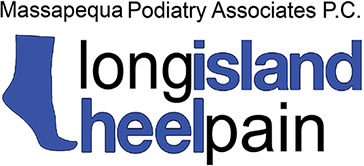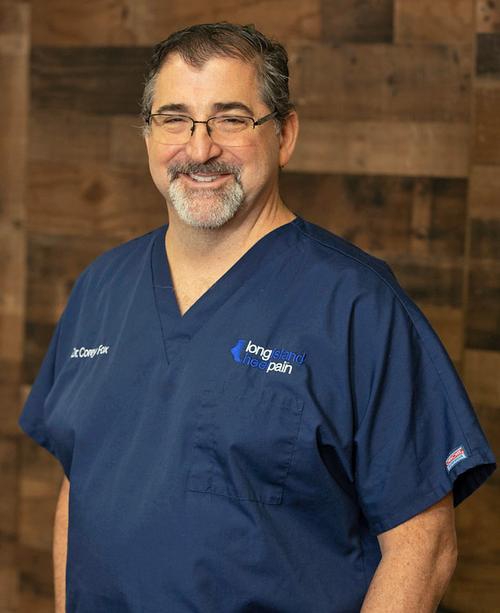 All are terms for doctors of podiatric medicine, also known as DPMs. These specialists are extensively trained in preventing, diagnosing, and treating injuries, disorders, diseases, and deformities of the feet and ankles.
All are terms for doctors of podiatric medicine, also known as DPMs. These specialists are extensively trained in preventing, diagnosing, and treating injuries, disorders, diseases, and deformities of the feet and ankles.
If you’re struggling with foot or ankle pain or injuries or discomfort, a podiatrist can provide relief. If you have a chronic health condition, such as diabetes, heart disease, arthritis, or peripheral artery disease, the potential complications of which can affect the feet or ankles, a DPM can play a vital role in your health management team.
Here's what you should know about doctors of podiatric medicine and how the highly skilled podiatrists at Massapequa Podiatry Associates can help you restore or maintain your foot and ankle health.
Table of Contents
What Education and Training Are Required To Become a Podiatrist (DPM)
Becoming a DPM takes many years of education and training and significant dedication. After obtaining a four-year undergraduate degree, people studying to be podiatrists must complete four years of graduate education at one of nine colleges of podiatric medicine in the U.S., followed by two years of hospital-based, post-graduate residency training. A residency rounds out a podiatrist's education with rotations in specialties such as internal medicine, anesthesiology, infectious disease, pediatrics, ER, surgery, and others. However, a DPM's education is never truly finished; our podiatrists complete regular continuing education and training activities to hone our skills and ensure we stay at the top of our field.
Meet Our Foot and Ankle Specialists in Long Island, New York
- Dr. Corey Fox completed his studies at the California College of Podiatric Medicine in Oakland, California in 1990 and served his residency at St. Mary's Medical Center in San Francisco. He's served Long Island podiatry patients since 1981.
- Dr. Justin LoBello graduated from Temple University School of Podiatric Medicine in Philadelphia, Pennsylvania in 2015 and served his residency at Huntington Hospital at Northwell Health. Serving as chief podiatry resident, Dr. LoBello received extensive surgical training for conditions affecting the foot and ankle.
Should I See a Podiatrist or an Orthopedist for Foot and Ankle Problems?
Many people don't realize that podiatrists receive robust medical education and training comparable to that of medical doctors (MDs) and doctors of osteopathic medicine (DOs). We're often asked whether it's better to see a podiatrist or an orthopedist for a foot/ankle injury or disorder. Our answer: See a DPM. Why? No one receives more focused training on the feet and ankles than podiatrists. While an orthopedist's training covers the feet and ankles in just a few weeks, doctors of podiatric medicine spend years working to understand the over 26 bones, 33 joints, and more than a hundred muscles, ligaments, and tendons in the human foot and ankle. This gives podiatrists unparalleled insight into foot and ankle ailments, their causes, and how to treat them.
Common Conditions Podiatrists Specialize In
- Plantar fasciitis, bone spurs, and other issues causing heel pain
- Calluses, corns, and warts
- Tendinitis
- Bunions, hammertoes, flat feet, and other deformities
- Strains, sprains, and other sports injuries
- Foot and ankle arthritis
- Neuromas, neuropathy, and other nerve problems
- Ingrown toenails, fungal toenails, and other nail issues
- Stress fractures and broken bones
- Diabetic foot complications
- Children's foot issues
- And much more
What Foot and Ankle Treatments Does Massapequa Podiatry Associates Offer?
At Massapequa Podiatry Associates, we offer a variety of treatments to suit our patients' needs and lifestyles. In addition to conservative options, such as R.I.C.E. , physical therapy, and custom orthotics, we also offer an array of advanced interventions, including:
- MLS Laser Therapy
- Platelet-rich plasma injections
- Shockwave therapy (also known as Extracorporeal Shockwave Therapy)
- Tenex Procedure
Our podiatrists can also perform surgeries on the feet and ankles.
Schedule an Appointment With Our Podiatrist in Long Island , NY
If you need help for your foot and/or ankle pain, Massapequa Podiatry Associate's highly skilled specialists can help.

